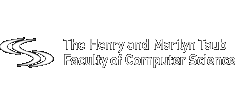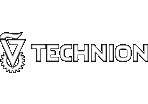Relevant publications
Dr. Eyal Rozenberg
A theoretical framework for an efficient normalizing flow-based solution to the Schrödinger equation

A central problem in quantum mechanics involves solving the Electronic Schrödinger Equation for a molecule or material. The Variational Monte Carlo approach to this problem approximates a particular variational objective via sampling, and then optimizes this approximated objective over a chosen parameterized family of wavefunctions, known as the ansatz. Recently neural networks have been used as the ansatz, with accompanying success. However, sampling from such wavefunctions has required the use of a Markov Chain Monte Carlo approach, which is inherently inefficient. In this work, we propose a solution to this problem via an ansatz which is cheap to sample from, yet satisfies the requisite quantum mechanical properties. We prove that a normalizing flow using the following two essential ingredients satisfies our requirements: (a) a base distribution which is constructed from Determinantal Point Processes; (b) flow layers which are equivariant to a particular subgroup of the permutation group. We then show how to construct both continuous and discrete normalizing flows which satisfy the requisite equivariance. We further demonstrate the manner in which the non-smooth nature (“cusps”) of the wavefunction may be captured, and how the framework may be generalized to provide induction across multiple molecules. The resulting theoretical framework entails an efficient approach to solving the Electronic Schrödinger Equation.
Data-driven modeling of interrelated dynamical systems
Non-linear dynamical systems describe numerous real-world phenomena, ranging from the weather, to financial markets and disease progression. Individual systems may share substantial common information, for example patients’ anatomy. Lately, deep-learning has emerged as a leading method for data-driven modeling of non-linear dynamical systems. Yet, despite recent breakthroughs, prior works largely ignored the existence of shared information between different systems. However, such cases are quite common, for example, in medicine: we may wish to have a patient-specific model for some disease, but the data collected from a single patient is usually too small to train a deep-learning model. Hence, we must properly utilize data gathered from other patients. Here, we explicitly consider such cases by jointly modeling multiple systems. We show that the current single-system models consistently fail when trying to learn simultaneously from multiple systems. We suggest a framework for jointly approximating the Koopman operators of multiple systems, while intrinsically exploiting common information. We demonstrate how we can adapt to a new system using order-of-magnitude less new data and show the superiority of our model over competing methods, in terms of both forecasting ability and statistical fidelity, across chaotic, cardiac, and climate systems.
Designing nonlinear photonic crystals for high-dimensional quantum state engineering

We propose a novel, physically-constrained and differentiable approach for the generation of D-dimensional qudit states via spontaneous parametric downconversion (SPDC) in quantum optics. We circumvent any limitations imposed by the inherently stochastic nature of the physical process and incorporate a set of stochastic dynamical equations governing its evolution under the SPDC Hamiltonian. We demonstrate the effectiveness of our model through the design of
structured nonlinear photonic crystals (NLPCs) and shaped pump beams; and show, theoretically and experimentally, how to generate maximally entangled states in the spatial degree of freedom. The learning of NLPC structures offers a promising new avenue for shaping and controlling arbitrary quantum states and enables all-optical coherent control of the generated states. We believe that this approach can readily be extended from bulky crystals to thin Metasurfaces and potentially applied to other quantum systems sharing a similar Hamiltonian structures, such as superfluids and superconductors.
A machine learning approach to generate quantum light

Spontaneous parametric down-conversion (SPDC) is a key technique in quantum optics used to generate entangled photon pairs. However, generating a desirable D-dimensional qudit state in the SPDC process remains a challenge. In this paper, we introduce a physically-constrained and differentiable model to overcome this challenge, and demonstrate its effectiveness through the design of shaped pump beams and structured nonlinear photonic crystals. We avoid any restrictions induced by the stochastic nature of our physical process and integrate a set of stochastic dynamical equations governing its evolution under the SPDC Hamiltonian. Our model is capable of learning the relevant interaction parameters and designing nonlinear quantum optical systems that achieve desired quantum states. We show, theoretically and experimentally, how to generate maximally entangled states in the spatial degree of freedom. Additionally, we demonstrate all-optical coherent control of the generated state by reshaping the pump beam. Our work has potential applications in high-dimensional quantum key distribution and quantum information processing.
Inverse design of spontaneous parametric downconversion for generation of high-dimensional qudits
Spontaneous parametric down-conversion in quantum optics is an invaluable resource for the realization of high-dimensional qudits with spatial modes of light. One of the main open challenges is how to directly generate a desirable qudit state in the SPDC process. This problem can be addressed through advanced computational learning methods; however, due to difficulties in modeling the SPDC process by a fully differentiable algorithm that takes into account all interaction effects, progress has been limited. Here, we overcome these limitations and introduce a physically-constrained and differentiable model, validated against experimental results for shaped pump beams and structured crystals, capable of learning every interaction parameter in the process. We avoid any restrictions induced by the stochastic nature of our physical model and integrate the dynamic equations governing the evolution under the SPDC Hamiltonian. We solve the inverse problem of designing a nonlinear quantum optical system that achieves the desired quantum state of down-converted photon pairs. The desired states are defined using either the second-order correlations between different spatial modes or by specifying the required density matrix. By learning nonlinear volume holograms as well as different pump shapes, we successfully show how to generate maximally entangled states. Furthermore, we simulate all-optical coherent control over the generated quantum state by actively changing the profile of the pump beam. Our work can be useful for applications such as novel designs of high-dimensional quantum key distribution and quantum information processing protocols. In addition, our method can be readily applied for controlling other degrees of freedom of light in the SPDC process, such as the spectral and temporal properties, and may even be used in condensed-matter systems having a similar interaction Hamiltonian.
Learning to localize objects using limited annotation with applications to thoracic diseases

Motivation: The localization of objects in images is a longstanding objective within the field of image processing. Most current techniques are based on machine learning approaches, which typically require careful annotation of training samples in the form of expensive bounding box labels. The need for such large-scale annotation has only been exacerbated by the widespread adoption of deep learning techniques within the image processing community: deep learning is notoriously data-hungry. Method: In this work, we attack this problem directly by providing a new method for learning to localize objects with limited annotation: most training images can simply be annotated with their whole image labels (and no bounding box), with only a small fraction marked with bounding boxes. The training is driven by a novel loss function, which is a continuous relaxation of a well-defined discrete formulation of weakly supervised learning. Care is taken to ensure that the loss is numerically well-posed. Additionally, we propose a neural network architecture which accounts for both patch dependence, through the use of Conditional Random Field layers, and shift-invariance, through the inclusion of anti-aliasing filters. Results: We demonstrate our method on the task of localizing thoracic diseases in chest X-ray images, achieving state-of-the-art performance on the ChestX-ray14 dataset. We further show that with a modicum of additional effort our technique can be extended from object localization to object detection, attaining high quality results on the Kaggle RSNA Pneumonia Detection Challenge. Conclusion: The technique presented in this paper has the potential to enable high accuracy localization in regimes in which annotated data is either scarce or expensive to acquire. Future work will focus on applying the ideas presented in this paper to the realm of semantic segmentation.
Inverse design of quantum holograms in three-dimensional nonlinear photonic crystals
We introduce a systematic approach for designing 3D nonlinear photonic crystals and pump beams for generating desired quantum correlations between structured photon-pairs. Our model is fully differentiable, allowing accurate and efficient learning and discovery of novel designs.
Localization with limited annotation for chest X-rays

Localization of an object within an image is a common task in medical imaging. Learning to localize or detect objects typically requires the collection of data which has been labelled with bounding boxes or similar annotations, which can be very time consuming and expensive. A technique which could perform such learning with much less annotation would, therefore, be quite valuable. We present such a technique for localization with limited annotation, in which the number of images with bounding boxes can be a small fraction of the total dataset (e.g. less than 1%); all other images only possess a whole image label and no bounding box. We propose a novel loss function for tackling this problem; the loss is a continuous relaxation of a well-defined discrete formulation of weakly supervised learning and is numerically well-posed. Furthermore, we propose a new architecture which accounts for both patch dependence and shift-invariance, through the inclusion of CRF layers and anti-aliasing filters, respectively. We apply our technique to the localization of thoracic diseases in chest X-ray images and demonstrate state-of-the-art localization performance on the ChestX-ray14 dataset.




